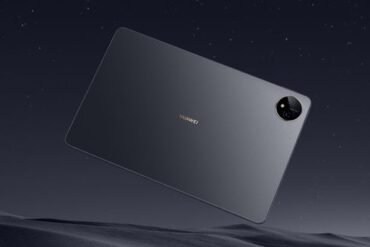Understanding GPU Boost Technology for Gaming
Table of Contents
What is GPU Boost? – Introduction to GPU Boost
GPU Boost is a technology developed by NVIDIA that dynamically increases the clock speed of a graphics processing unit (GPU) to maximize performance during gaming or other graphics-intensive tasks. Introduced with the Kepler architecture, GPU Boost has evolved over the years and is now available in the latest NVIDIA GPUs, including the GeForce RTX series.
GPU Boost works by monitoring various factors such as temperature, power consumption, and GPU load in real-time. Based on these readings, the GPU Boost algorithm adjusts the clock speed to ensure optimal performance without exceeding the predefined power and temperature limits set by the manufacturer.
One of the key benefits of GPU Boost is that it allows GPUs to operate at higher clock speeds than their base frequencies, resulting in increased frame rates and smoother gameplay. This technology enables gamers to push their graphics cards to the limit without worrying about manual overclocking or potential stability issues.
Here are some important points to understand about GPU Boost:
- Dynamic Clock Adjustment: GPU Boost dynamically adjusts the clock speed of the GPU based on real-time monitoring, allowing it to boost performance when required.
- Thermal and Power Limits: GPU Boost takes into account temperature and power limits to prevent the GPU from overheating or exceeding its power consumption capabilities.
- Boost Clock and Base Clock: GPUs have a base clock frequency, which is the default operating speed, and a boost clock frequency, which is the maximum speed the GPU can achieve with GPU Boost.
- Automatic and Seamless: GPU Boost operates automatically and seamlessly, without the need for manual intervention. It ensures that the GPU is always performing at its best, without sacrificing stability.
Overall, GPU Boost is a powerful feature that enhances gaming performance by intelligently managing the GPU’s clock speed. It provides users with an optimized experience, delivering the best possible visuals and frame rates without the need for manual overclocking. Understanding how GPU Boost works can help gamers make the most of their NVIDIA graphics cards and enjoy a smoother gaming experience.
How Does GPU Boost Work? – Functioning of GPU Boost
GPU Boost is a technology developed by NVIDIA that allows graphics processing units (GPUs) to automatically increase their clock speeds to achieve optimal performance in gaming and other demanding applications. By dynamically adjusting the GPU’s clock speeds based on factors such as power consumption and temperature, GPU Boost ensures that the GPU operates at its maximum potential without compromising stability.
The functioning of GPU Boost can be broken down into several key steps:
- Monitoring: GPU Boost constantly monitors various parameters, including GPU temperature, power consumption, and workload, to determine the current operating conditions.
- Power Limit: The GPU has a predefined power limit, which represents the maximum amount of power it can consume. GPU Boost ensures that the GPU operates within this limit to avoid overheating or exceeding the power supply’s capabilities.
- Temperature Threshold: GPU Boost also considers the GPU temperature and sets a temperature threshold. If the temperature exceeds this threshold, GPU Boost may reduce the clock speed to prevent overheating.
- Boost Clock: The boost clock is the maximum clock speed that the GPU can achieve under ideal conditions. GPU Boost adjusts the clock speed dynamically, increasing it as long as the power and temperature limits are not exceeded.
- Voltage Control: GPU Boost also controls the voltage supplied to the GPU to optimize power efficiency and stability. By adjusting the voltage based on the current workload, GPU Boost ensures that the GPU operates efficiently without unnecessary power consumption.
Overall, GPU Boost technology allows GPUs to deliver enhanced performance in real-time by intelligently managing power, temperature, and clock speeds. It enables gamers to experience smoother gameplay, higher frame rates, and improved graphics quality by harnessing the full potential of their GPUs.
Benefits of GPU Boost – Advantages for Gaming Performance
GPU Boost technology is a powerful tool that can greatly enhance gaming performance. By optimizing the capabilities of your graphics processing unit (GPU), GPU Boost can deliver smoother gameplay, improved frame rates, and an overall better gaming experience. Let’s take a closer look at the benefits of GPU Boost:
- Increased Clock Speed: One of the key advantages of GPU Boost is its ability to dynamically adjust the clock speed of your GPU based on workload and temperature. This means that during demanding gaming sessions, the clock speed can be boosted to deliver higher performance, resulting in smoother gameplay and faster frame rates.
- Improved Thermal Management: GPU Boost also incorporates advanced thermal management techniques, ensuring that your GPU stays within safe temperature limits. By dynamically adjusting the clock speed and power consumption, GPU Boost helps prevent overheating and potential performance throttling, allowing you to enjoy extended gaming sessions without any interruptions.
- Automatic Optimization: With GPU Boost, you don’t need to manually adjust settings or overclock your GPU. The technology automatically optimizes the performance based on your specific game and system requirements. This makes it easier for both casual and hardcore gamers to achieve the best possible gaming performance without any hassle.
- Consistent Performance: GPU Boost ensures consistent performance throughout your gaming session. By dynamically adjusting clock speeds and power consumption, GPU Boost minimizes fluctuations and ensures a stable and smooth gaming experience, even during intense gaming moments.
- Future-Proofing: As games become more demanding, having a GPU with GPU Boost technology can be a great investment. GPU Boost helps future-proof your gaming rig by maximizing the performance of your GPU, allowing you to play the latest games at higher settings and resolutions for longer periods without the need for frequent upgrades.
Overall, GPU Boost technology provides significant advantages for gaming performance. It enhances your GPU’s clock speed, optimizes thermal management, offers automatic optimization, delivers consistent performance, and helps future-proof your gaming rig. By harnessing the power of GPU Boost, you can take your gaming experience to the next level and fully immerse yourself in the virtual worlds of your favorite games.
Understanding GPU Boost Settings – Configuring GPU Boost
Configuring GPU Boost settings is essential for optimizing your gaming experience and getting the most out of your graphics card. GPU Boost technology is designed to automatically increase the clock speed of your GPU based on its temperature and power consumption, providing a performance boost when needed. However, to take full advantage of this feature, you may need to tweak the settings according to your preferences and system requirements.
Here are some key points to consider when configuring GPU Boost settings:
- Temperature and Power Targets: GPU Boost relies on temperature and power targets to determine how much it can boost the clock speed. By adjusting these targets, you can control the level of performance and temperature balance. Higher targets allow for greater performance but may increase the temperature and power consumption.
- Overclocking: GPU Boost technology works hand in hand with overclocking. If you’re comfortable with manually overclocking your GPU, you can further enhance its performance by increasing the base clock or memory clock. However, keep in mind that this may also increase the temperature and power consumption, so monitor them closely.
- Fan Curve: The fan curve determines how the GPU’s cooling fan behaves at different temperatures. Adjusting the fan curve can help keep the GPU temperature in check, especially during intense gaming sessions. You can set the fan to run at higher speeds earlier to maintain lower temperatures, but it may result in increased noise levels.
- Software Tools: Most graphics card manufacturers provide software tools that allow you to easily configure GPU Boost settings. These tools often come with user-friendly interfaces, allowing you to adjust settings such as temperature targets, power targets, fan curves, and even enable or disable GPU Boost altogether.
It’s important to note that every system is different, and what works for one may not work optimally for another. Experimentation and monitoring are key to finding the optimal GPU Boost settings for your specific setup. Keep an eye on temperature, power consumption, and performance metrics to ensure a stable and efficient gaming experience.
Optimizing Gaming Experience with GPU Boost – Maximizing Performance
When it comes to gaming, performance is key. Every gamer wants to enjoy their favorite games at the highest level of quality and smoothness possible. This is where GPU Boost technology comes in. GPU Boost is a feature developed by NVIDIA that optimizes the performance of your graphics card, ensuring you get the most out of your gaming experience. In this section, we will explore how GPU Boost works and how you can maximize its benefits.
GPU Boost technology dynamically adjusts the clock speed of your graphics card based on the workload it is handling. This means that the GPU will automatically increase its clock speed when it detects that more performance is needed, and decrease it when the workload is lighter. By doing so, GPU Boost ensures that your graphics card is always operating at its optimal performance level, delivering the best possible gaming experience.
Here are some tips to maximize the benefits of GPU Boost:
- Keep your graphics card cool: Excessive heat can limit the performance of your graphics card. Make sure your PC has proper cooling solutions such as fans or liquid cooling to maintain optimal temperatures.
- Update your graphics card drivers: Regularly updating your graphics card drivers ensures that you have the latest performance optimizations and bug fixes provided by the manufacturer.
- Overclock your graphics card: If you’re comfortable with it, overclocking your graphics card can further boost its performance. However, be cautious and make sure to follow proper overclocking procedures to avoid damaging your hardware.
- Optimize in-game settings: Adjusting in-game settings can have a significant impact on performance. Experiment with different settings to find the right balance between visual quality and performance.
- Monitor your GPU usage: Use monitoring software to keep track of your GPU’s usage and performance. This can help you identify any performance bottlenecks and make necessary adjustments.
By following these tips, you can ensure that you are getting the most out of GPU Boost technology and maximizing your gaming performance. Remember to always prioritize the health and safety of your hardware when making any adjustments or optimizations.



























